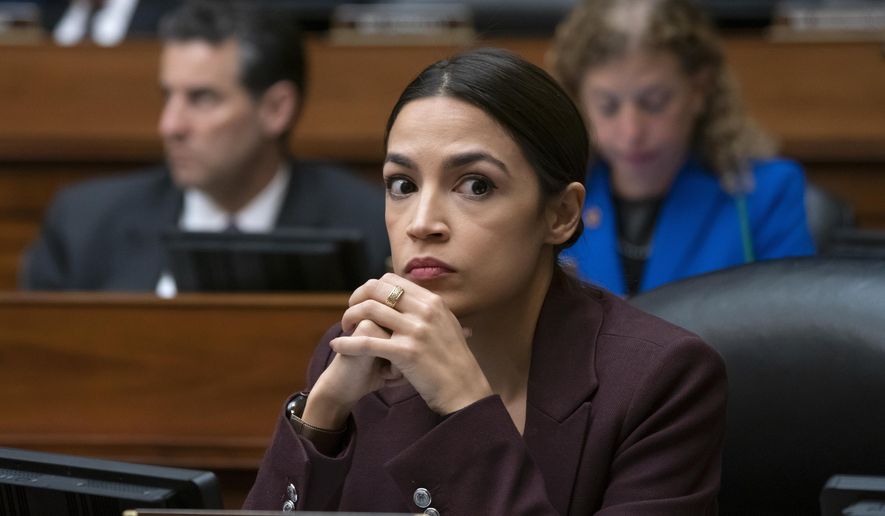The Green New Deal would come at a hefty cost — but figuring out how much is proving to be an impossible task for the bean-counters.
The American Action Forum, a right-leaning think tank run by a former Congressional Budget Office director, says the plan could run anywhere from $51 trillion to $93 trillion in costs to the government and private sector over a decade.
Liberal lawmakers who made the proposal laughed that off, with Sen. Edward J. Markey, Massachusetts Democrat, calling it “Big Oil misinformation.”
The problem is the backers don’t have any studies of their own, only promises that it won’t be so bad and warnings that doing nothing is worse.
They’ll be honing those arguments as the Senate prepares to take the first vote on the Green New Deal in the coming weeks.
The plan currently is enshrined in a 14-page resolution calling for a major overhaul of the U.S. economy, discouraging the use of fossil fuels and mandating energy efficiency repairs to existing buildings, as well as an expansion of the government’s safety net, including a jobs guarantee and housing for all.
The plan does not say how those goals would be achieved.
“It is such a bold vision with so little detail that it really defies anything one could call analysis,” said Jason Grumet, president of the Bipartisan Policy Center.
That doesn’t mean folks haven’t tried.
The American Action Forum said some of the parts of the plan have been proposed — and scored — before. A jobs guarantee, universal health care and food security would range from $44.3 trillion to $82.1 trillion, depending on the details.
Environmental initiatives such as expanding high-speed rail need to be fleshed out, but based on the information available now, the AAF estimates additional costs of $8.3 trillion to $12.3 trillion over 10 years.
But other aspects of the plan are confounding.
“Retrofitting houses to an unknown efficiency standard? Got me,” said Douglas Holtz-Eakin, president of the AAF, who as a former director of the CBO did these sorts of cost evaluations for a living.
“I don’t think anyone is going to dispute the desirability of a clean environment and people having jobs and people having health insurance and having food security,” Mr. Holtz-Eakin said. “The question is — do we want these programs? Do we want these projects? One way to help decide that is to figure out how much they cost.”
Yet cost is just one factor. Mr. Grumet said the Green New Deal has taken on a significance beyond its economic tradeoffs, becoming a cultural touchstone for the current political debate.
“When you’re thinking about proposals that have such broad societal impact, economic analysis is a reasonably limited tool,” Mr. Grumet said. “What is the cost of not eating a T-bone steak?”
Liberal activists say the other cost the AAF didn’t calculate is the cost of doing nothing to combat global warming. Depending on the extent of warming, the costs run to trillions of dollars a year, globally.
Backers also suggest economic growth spurred on by the social changes ultimately would pay for the investments.
Usually the CBO would be called on to conduct an authoritative report. But Congress’s official scorekeepers generally wait for a bill to emerge from committee, and that may never happen.
Senate Majority Leader Mitch McConnell is skipping the committee process and bringing the Green New Deal directly to the chamber floor, likely over the next few weeks. House Speaker Nancy Pelosi has said the measure will go through the committee process in her chamber.
• Gabriella Muñoz can be reached at gmunoz@washingtontimes.com.




Please read our comment policy before commenting.